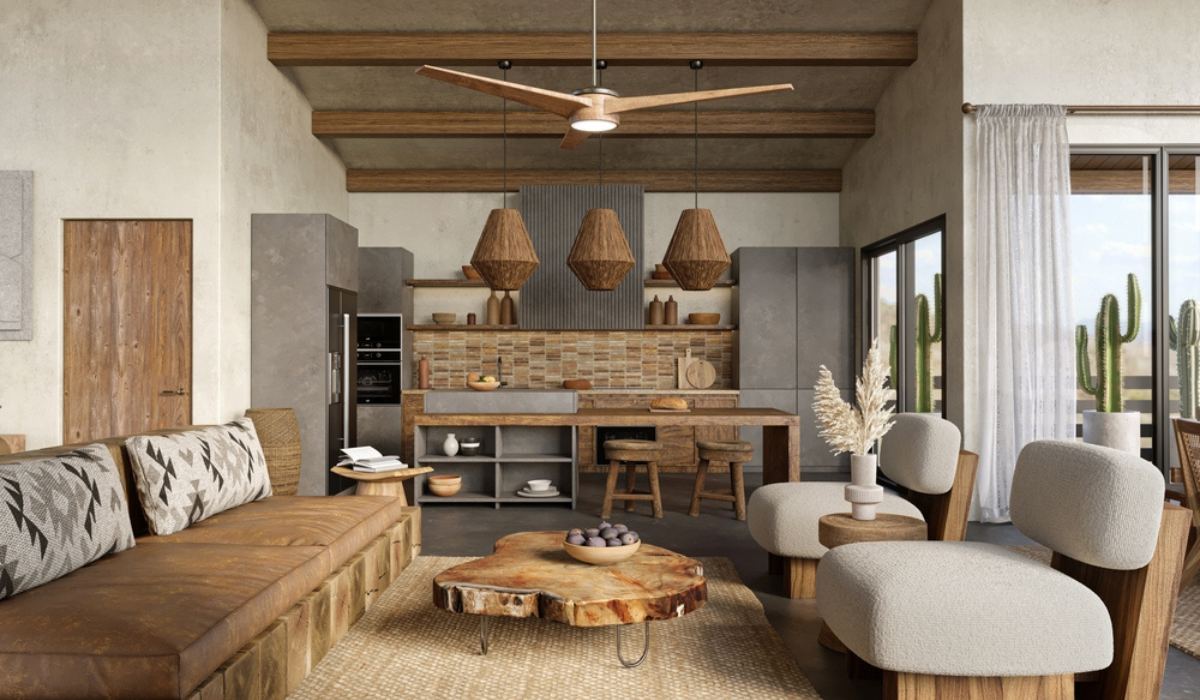Wabi-sabi is a Japanese décor idea that is associated with imperfection, impermanence, and the natural process of growth and decay. When wabi-sabi is applied and incorporated inside the home as a décor idea it tends to show the simplicity, minimalism, authenticity, and beauty of the house. The main aspect of incorporating wabi sabi décor is to remind people that happiness can be found in imperfect things, too. It has a connection to nature which offers a peaceful and time-less approach. It also suggests that simplicity is not only in installing expensive materials but also in being found in the simplest ways.
Wabi-sabi décor contains two words wabi and sabi which have different meanings but together they put a beautiful idea. Wabi means simplicity, humility, authenticity, beauty in imperfect things, and modesty. Whereas, sabi means the passage of time, age, the natural process of ageing, and the shine that different objects require. Some of the elements that can be identified as wabi-sabi décor include natural materials, simple and functional furniture, an earthy colour palette, vintage and handcrafted items, textured textiles, weathered and distressed finishes, plant elements, soft lighting, and minimal wall art.
See also: Top 10 light green wall colour combinations that you need to try
Wabi-sabi interior design ideas
Natural wooden elements
If you want to have wabi-sabi décor items in the house, you can start revamping your furniture. You can add natural wooden elements to your home spaces. Weathered and distressed wooden features are the key elements in wabi-sabi décor. The natural textures of wood bring warmth to the house.

Source: Pinterest (Art station)
Earthy colour palette
To incorporate wabi-sabi designs in the house, you can choose an earthy colour palette. You can paint the walls or keep the elements in that palette to have a wabi-sabi effect. Pastel shades such as baby blue, muted green, and soft greys are some of the colours including an earthy palette. For furniture, you can select the warm brown tones. These colours can connect you with nature and bring calmness.

Source: Pinterest (Mint equity)
Textured designs and fabrics
Textured fabrics can be used to have a wabi-sabi effect in your home. Textured designs can be given to pillows, rugs, and curtains to create comfort for everybody in the home. These textures include irregular weaves, knots, and natural dye patterns.

Source: Pinterest (Meson art)
Vintage and handcrafted elements
Decorate your living space with vintage and handcrafted ceramics, textiles, and pottery. You can look for pieces that have irregular and unusual sizes and shapes and have an artisan’s touch. You can keep them open as decorative items.

Source: Pinterest (Barefoot Gypsy)
Natural stone effect
Natural stone items like granite countertops, marble table tops, and stone tiles work well in the house, especially in areas like kitchens and bathrooms. Each of these elements has a natural and imperfect alignment which goes well with the overall theme of the house.

Source: Pinterest (Fabhub)
FAQs
What is wabi-sabi décor?
Wabi-sabi décor is a popular Japanese philosophy while designing home interiors. The elements are natural, imperfect, and simple.
What are the popular colours associated with wabi-sabi décor?
Colours like warm browns, greys, greens, and blues are often used in wabi-sabi décor.
What are the main elements in wabi-sabi décor?
The main elements in this design are natural materials, muted colour palettes, imperfect and handmade items, and weathered finishes.
Is wabi sabi décor limited to traditional homes?
No, wabi-sabi décor can easily be incorporated into urban and modern houses.
Can I mix wabi sabi décor with other designs?
Yes, wabi-sabi décor can be easily combined with other types of design ideas.
Is wabi sabi décor eco-friendly?
Yes, wabi-sabi décor often uses eco-friendly elements promoting sustainability.
Who are the famous interior designers of wabi-sabi?
Annabell Kutucu, Arjaan de Feyter, and Axel Vervoordt are some of the notable designers of wabi-sabi.
| Got any questions or point of view on our article? We would love to hear from you. Write to our Editor-in-Chief Jhumur Ghosh at jhumur.ghosh1@housing.com |







